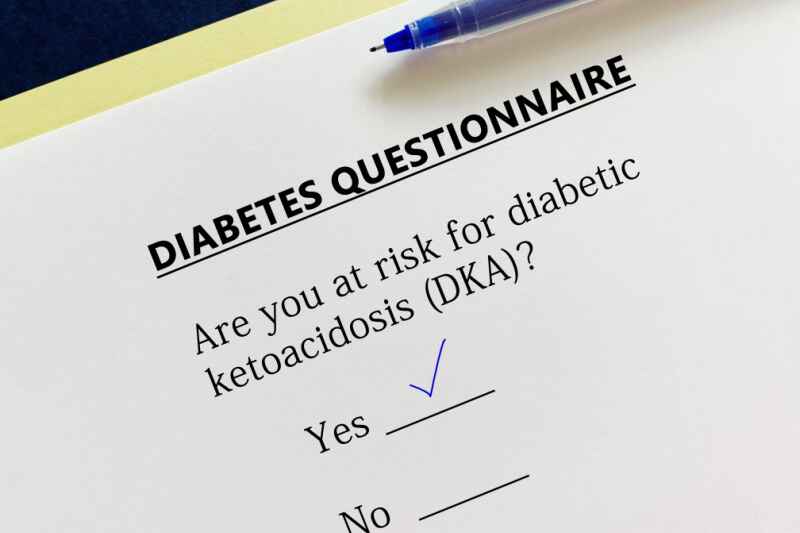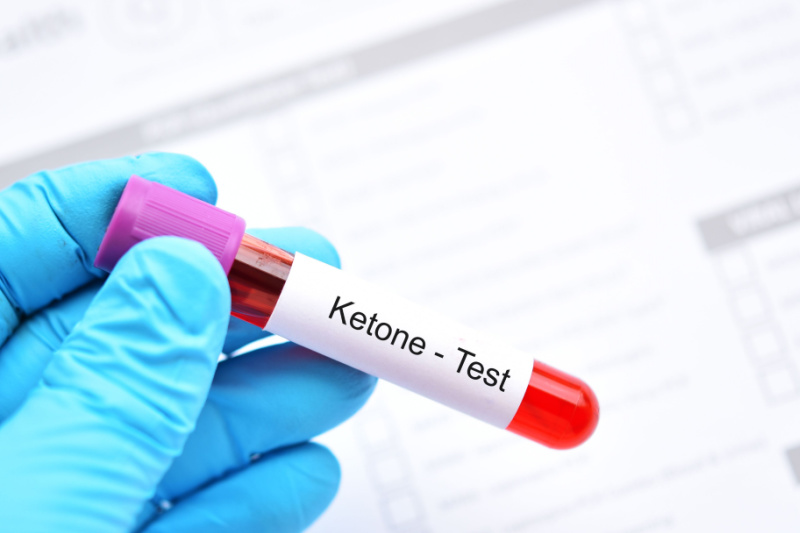Diabetic ketoacidosis, or DKA, is a severe medical condition that occurs when your body produces high levels of blood acids called ketones. This may happen in people with diabetes, especially type-1 diabetes, but is not exclusive to them.
इनके बारे में जानें:
- Understanding diabetic ketoacidosis (DKA)
- Symptoms of diabetic ketoacidosis
- Causes of diabetic ketoacidosis
- Treatment and management
Understanding diabetic ketoacidosis (DKA)
Diabetic ketoacidosis is a health condition that occurs when your body cannot produce any more insulin. Insulin is a natural body hormone that plays a huge role in letting sugar into your body cells. Without insulin, our bodies break fats as a source of body fuel. This leads to a buildup of acids, also known as ketones, in your bloodstream. When left unmanaged, this buildup of ketones and acids can cause diabetic ketoacidosis.
Symptoms of diabetic ketoacidosis

Here are the symptoms of diabetic ketoacidosis that you might experience, often during the first 24 hours. For some people, this sign can also be the first symptom of diabetes:
- Increased thirst and urination
- उबकाई और उल्टी
- Intense stomach pain
- सांस फूलना
- Fruity-scented breath
- Dizziness and confusion
- Headaches
- Dry skin and mouth
- Pain in muscles
Most symptoms of diabetic ketoacidosis can also show up in medical test results, such as:
- High ketone levels in your urine
- अधिक ब्लड शुगर की मात्रा
Causes of diabetic ketoacidosis
Here are the most common diabetic ketoacidosis causes:
- Illnesses and infections: When you are sick, you are less likely to eat or drink as much as you normally do. This causes unstable blood sugar levels, leading to DKA.
- Irregular insulin shot dosages: Missing routine insulin shots or taking the wrong dose can also lead to diabetic ketoacidosis.
Other causes are:
- Heart attacks and strokes
- Traumatic physical injuries
- गर्भावस्था
- अग्नाशयशोथ
- Medications such as diuretics (water pills) and corticosteroids (used for treating inflammation
Treatment and management

You should be immediately taken to the hospital if you have DKA. Your treatment might involve:
- Replacement of fluids because of frequent urination to dilute the sugar in your blood
- Replacement of electrolytes as low insulin levels can also lower electrolyte levels in your body
- Taking medications for any underlying conditions such as infections or irregular insulin dosages
You can also prevent this serious health condition by taking some proactive steps:
- चेक करें अपना ब्लड शुगर की मात्रा periodically, especially if you are sick.
- Take medications as prescribed.
- Talk to your doctor about how you can adjust your insulin dosages.
If you are still concerned about DKA or how to manage your diabetes, visit a medical expert and ask for customized guidance. A personalized diabetes management plan can enable you to live life fully.
Stay tuned to the Activ Living Community. Keep up to date with the latest health tips and trends through expert videos, podcasts, articles, and much more in पोषण, फिटनेस, सचेतन, और लाइफस्टाइल से जुड़ी बीमारियां like Asthma, Blood Pressure, Cholesterol, and Diabetes. Activ Living ke saath sahi sehat ki shuruaat ABHIkaro.
You may also be interested in the following blogs:
- इंसुलिन थेरेपी डायबिटीज के मरीज़ों के जीवन को कैसे आसान बनाती है?
- Sedentary Lifestyle And Diabetes: Transform Passive Life To Active Life
Popular Searches
How to lower blood pressure | Fruits good for liver | Unhealthy foods | रागी के लाभ | बेसल मेटाबोलिक रेट | हाई ब्लड प्रेशर के लिए एक्यूप्रेशर पॉइंट्स | Ayurvedic medicine for blood pressure | How to control cholesterol at home | Homeopathy for Asthma | Biological Age | Home remedies for TB | Natural beta blockers | Negative effects of internet | Types of walking | ब्लड प्रेशर कैलकुलेटर | ब्लड शुगर कैलकुलेटर | BMI कैलकुलेटर





 1800-270-7000
1800-270-7000





